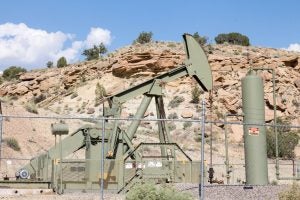Permian methane measurements will aid New Mexico regulators
 The Permian Basin has grown to become the most productive oil field in the country and one of the largest in the world, but too little is known about what this drilling boom means for methane waste and pollution. A new science effort led by Environmental Defense Fund with researchers from Penn State, the University of Wyoming and Scientific Aviation will help fill this knowledge gap and better inform state regulators in New Mexico who are moving forward on state methane rules.
The Permian Basin has grown to become the most productive oil field in the country and one of the largest in the world, but too little is known about what this drilling boom means for methane waste and pollution. A new science effort led by Environmental Defense Fund with researchers from Penn State, the University of Wyoming and Scientific Aviation will help fill this knowledge gap and better inform state regulators in New Mexico who are moving forward on state methane rules.
This first-of-its-kind study will combine three different types of data collection, utilizing methane measurements from airplanes, a network of towers, and vehicles that take measurements downwind from well sites. All data collected will be shared publically to better inform local communities in southeast New Mexico and West Texas, as well as state regulators and the producers themselves, about the scope and scale of the methane problem in the Permian.
New Mexico impacts
This work builds on scientific methane measurements taken last year by the University of Wyoming and statewide New Mexico estimates completed by EDF that show a large and growing methane problem in southeastern New Mexico’s Permian Basin. This work — the first public, transparent, site-level data on methane pollution in the Permian — revealed that as oil and gas production in the Permian has boomed in recent years, New Mexico’s methane problem has doubled to more than one million metric tons per year. This is five times greater than what the Environmental Protection Agency estimates for the state.
Permian methane measurements will aid New Mexico regulators Share on XTo put this number in context, oil and gas methane pollution in New Mexico has the same short-term climate impact as 22 coal-fired power plants. This underscores the importance of addressing New Mexico’s methane problem as it drives toward Gov. Michelle Lujan Grisham’s aggressive and needed climate pollution reduction goal of a 45% cut in statewide greenhouse gas emissions by 2030.
And despite recent comments from the governor to a meeting of oil and gas industry executives in Santa Fe, we cannot trust industry to fix this on their own. Estimates show that the industry’s proposal will only cut a tiny fraction, about 15%, of the state’s methane emissions. On the other hand, nationally-leading standards could allow the state to cut methane by more than half.
State regulators under Gov. Lujan Grisham need to take this problem seriously and work to develop comprehensive methane rules that could lead to dramatic reductions in New Mexico’s emissions. This new Permian effort, along with the satellite data gathering recently announced by Gov. Lujan Grisham and Descartes Labs, should help the state develop, implement and enforce strong rules to minimize methane pollution and waste.
Not a moment too soon
As the Trump administration continues its efforts to unravel federal methane protections, it is even more necessary for states like New Mexico to step up and lead on efforts to protect their residents from oil and gas pollution. Oil and gas operators in New Mexico currently leak, vent and flare over $240 million in natural gas, costing state taxpayers $43 million a year in lost revenue. If the Lujan Grisham administration allows the Permian boom to continue without strong methane regulations, waste and pollution will increase substantially, and cost taxpayers even more money while spewing millions of tons of climate pollution into the atmosphere.











